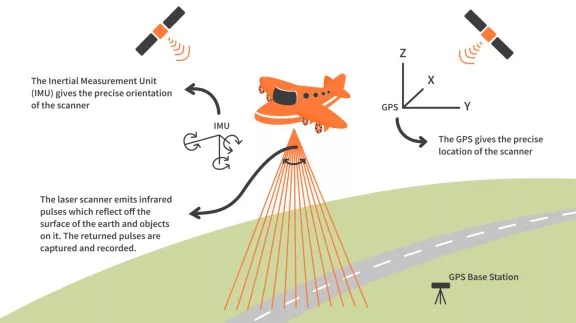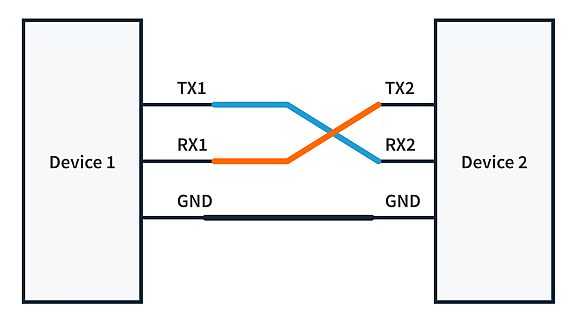A relay is an electrically operated switch. It is used to control a high-power circuit using a low power signal. The main advantage of relays is that the low power controlling circuit and the circuit to be controlled are completely isolated from each other. Transistors are also used for switching but they do not provide the isolation between the controlling and load circuits like relays. Relays are also used in places where several circuits need to be controlled with the same signal. Traditionally, relays use electromagnets to mechanically perform the switching. But the newer versions of relays use electronics for switching purposes and are known as solid-state relays. They operate on the optical properties of semiconductors rather than relying on physical moving parts.
Internal Structure of a Relay
There is a primary circuit (control circuit) and a secondary circuit (load circuit) in the relay. The primary circuit consists of an electromagnetic coil of wire wrapped around a soft iron core and a movable armature. The armature and the coil are separated by a small air gap when the coil is not energized. The primary side is powered through a low voltage DC signal. The armature is present at the end of the coil which is pivoted at a point and can move towards the yoke of the electromagnet if the coil is energized. The other end of the armature is connected to a spring which helps the armature return to its original position.
On the secondary side, we have our load circuit, the circuit on which we have to perform the switching, connected between the normally open and common terminal of the relay. The common terminal is a movable contact and the normally open terminal is a fixed contact. The connected load could be anything that consumes electricity like a fan, motor, light bulb, etc.

Working of a Relay
A relay works on the principle of electromagnetism. We know that passing a current through a wire generates a magnetic field. Relays use the same principle to perform switching. Take a look at the following circuit. The coil of the relay or the primary side is powered with a 24V DC source with the help of a control input switch. On the secondary side is our load connected between the other terminals of the relay and powered by a 120V AC source.

Initially, the control input is kept off and the coil stays in the unenergized state. As a result, our load stays in the OFF condition.

When the control input is turned on, the current starts flowing through the coil and it gets energized. The energized coil generates a magnetic field around it, strong enough to attract the movable armature towards itself. This motion of the armature pushes the common terminal (movable contact), present at the other end of the armature, towards the normally open terminal (fixed contact). They come in contact, complete the load circuit and our load is turned ON. One important thing to note in the circuit above is that the AC power supply of the load side is completely isolated from the DC supply in the primary circuit but still, we were able to perform the switching.
Regular Relays vs Power Relays
All electrical devices need switching at some point in their operation, after all, we can’t keep them turned on forever. These electrical devices may vary from low power devices like light bulbs to high power devices like motors, automotive electronics, elevators, etc. But just like every other electronic component, relays also have some limitations. They have maximum allowed power ratings for each model and variant. For example, if a regular relay with a 60W power rating is supplied with a voltage of 250V and the current consumed by the load is 2A, we will have problems. The power consumed can be calculated as the product of applied voltage and the current drawn by the relay, which calculates to 500W and exceeds the power rating of the relay by multiples of the actual rating. This can permanently damage the relay.
Another major problem affecting the performance of relays when operating with high voltages is arcing. It is the flow of current from one contact of the relay to the other contact, through the air gap present between them while they are open. Arcing generates a lot of heat inside and also erodes the contacts over time, reducing the operating lifetime of a relay.
To meet such high current and voltage requirements without exceeding the power and temperature thresholds, power relays are used. Power relays have the same principle of operation as a regular relay. They have the same components, the same method of switching as explained above, but they have higher current and voltage ratings, allowing us to perform switching on high power loads. Unlike regular relays, power relays are specially designed such that they generate less heat and also reduced arcing while switching. The switch contacts of a power relay are significantly different from the switch contacts of a regular relay.
The relation between power, current, and resistance is shown by the expression below

Where,
P = Power Consumed
I = Current
R = Resistance
The power is directly proportional to the resistance, hence increasing the resistance increases the power consumed. Switch contacts also have some resistance, and it is decided by the material it is made of. One of the ways to reduce the heat generated is by carefully choosing the materials of the switch contact such that they have lesser resistance. This reduces power consumption and keeps the relay under safe operating conditions. As one of our Friends of CircuitBread, OMRON Electronic Components, did an in-depth video about the importance of temperature thresholds and ratings of a relay, which you can check out here - OMRON Creative Lab | Energy Relays.
Regular relays should be chosen for low-power signals. They can be used in small-scale electronic applications, hobbyist projects involving microcontrollers, etc. Power relays, on the other hand, should be chosen for power switching industrial applications like in automobiles, elevators, operating valves, etc.
Selecting the correct relay is critical to the reliability of the controller and the integrity of the switched signal. Before choosing a relay, you should not only look for power ratings but also at other important factors such as their operating lifetime, operating environments, size, coil voltage, coil current, and switching time. All these factors play a major role in making the system more efficient and safe.














